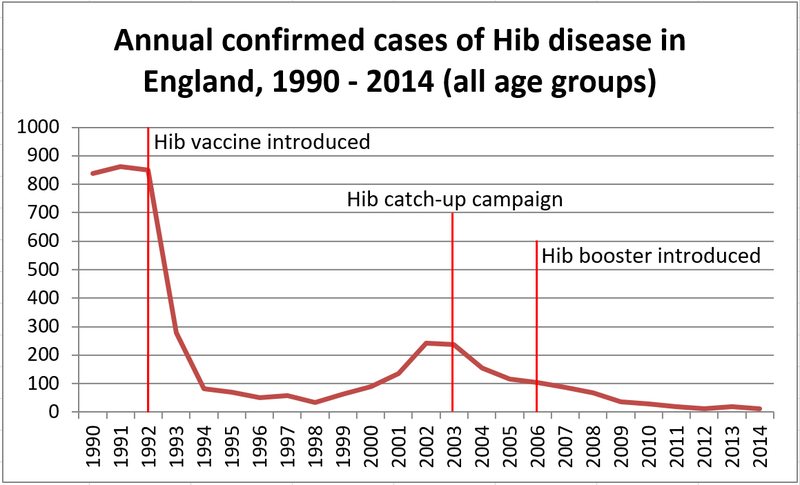|
Haemophilus influenzae type b (Hib) is a bacterium which can cause a range of very serious diseases, particularly in children under the age of 5. There are very few cases of Hib disease in older children and adults. 60% of cases of Hib disease result in meningitis, often with septicaemia (severe blood poisoning). 15% of cases result in epiglottitis (inflammation of the epiglottis). Even with medical treatment, about 1 in 20 children who develop Hib meningitis die. Before a vaccine was introduced, it is estimated that there were up to 1500 cases of Hib disease every year in the UK, leading to about 900 cases of meningitis and 60 deaths each year. 1 in 5 of the babies and children who survived Hib meningitis were left with severe long-term effects such as learning disabilities, seizures (fits) or deafness. Before a vaccine was available, Hib disease was the main cause of meningitis in young children in the UK. It is now very rare in the UK, but worldwide it is still a major cause of death in children under 5. The World Health Organization estimates that Hib causes millions of cases of serious disease every year. About 200,000 young children died from Hib disease in 2008. Hib disease – Matthew’s storyThree-year-old Matthew was hospitalised with Hib disease which almost killed him. He had not been vaccinated. Grateful thanks to PKIDs (Parents of Kids with Infectious Diseases) Hib: A Family's Story (full video)
https://www.youtube.com/embed/iy9iywzE0z0?wmode=opaque&controls=&rel=0
|




